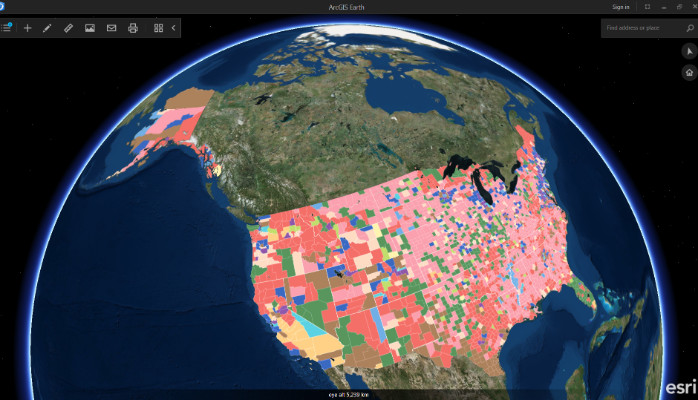During our 14th Annual Anniversary Sale you can save up to 25% on GIS training.
In the last article we discussed how data science skills can be linked to GIS technology. In this article, we’ll have a look at how GIS skills can improve your work as a data scientist.
In the first article, we defined a data scientist as someone who “organizes, analyzes and interprets data”. If we add spatial data to the mix, there are skills that GIS technology and GIS specialists can offer to the data science profession, summed up below:
- Perform spatial analysis
Geospatial professionals know everything about doing spatial analysis. Whether they use GIS software or programming languages for doing analysis, they know how to perform spatial queries and apply geoprocessing tools for solving a problem that requires spatial analysis. Just as a data science workflow, a spatial analysis workflow involves multiple steps to get to the final results. Spatial analysis may be just one part of the puzzle but in itself may be complex and large enough. Knowledge of GIS, SQL and programming languages and the available libraries at hand will make you a much more productive data scientist.
- Perform spatial statistics
GIS software offers special scientific tools for doing spatial analysis and modeling. Take for example the spatial statistics toolbox from ArcGIS, that combines a complex set of algorithms and requires knowledge on the individual tools in order to use them correctly. Whereas data science requires statistical knowledge, spatial statistics are an interesting subdomain taught in Geography departments that will surely benefit any data science workflows involving spatial statistics.
- Work with spatial IoT sensor data
There´s a direct connection between spatial data and IoT devices, as sensor data produced by IoT devices have a spatial component – their location is part of the metadata they produce, present in x,y coordinates. Knowing how to read, convert and present this data is a skill that will make you better data scientist. And this is exactly what GIS technology is all about – working with spatial data.
Dealing with projections and coordinate systems is what makes GIS unique. It´s no surprise that many people who have no experience with spatial data get puzzled when they first find out about map projections, conversions and looking up spatial reference codes. Here, GIS professionals can make a difference. When working with spatial data on a daily basis, you know what you can and cannot do with spatial data. For instance, knowing what types of projections to use when working with distances.
- Present spatial data
Part of GIS is cartography, the art of producing readable and good-looking maps. Data scientists are required to not only analyze and prepare data, but also to present their findings in an attractive way to their audience. Whereas GIS software has always offered tools to produce attractive maps, the open source movement is catching up and integrating cartography tools into data science workflows, making maps not just an afterthought but an important part of the data science puzzle. GIS and location technology companies, such as Esri, have developed business analytics tools where data presentation forms the heart of the application. In addition to this, data visualization software such as Tableau and Microsoft Excel now offer mapping capabilities found in GIS software.

